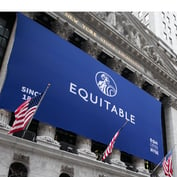New York Implements New UL Reserving Requirements
By
New York has put a new emergency rule into effect that creates stronger reserving guidelines for life insurance products, including universal life insurance policies with secondary guarantees.
The amendment to Part 98 of Regulation 147 took effect on Dec. 29, 2004. The new rule provides examples of policy designs that constitute guarantees and describes the reserve methodologies to be used in valuing such policies. Other products besides UL that could be affected primarily include non-level premium and/or non-level benefit life, indeterminate premium life, variable life and credit life insurance policies.
The New York insurance department cites an effort among some insurers to design products that “circumvent” existing reserve standards. It adds that there is a solvency concern for those companies and a “serious threat that could be imposed on consumers.”
The department says companies that “circumvent” the law are placing themselves at a competitive advantage over companies that follow existing reserving guidelines.
It states that unless notification was provided previously to the superintendent to adopt lower reserves, insurers would need the superintendents prior approval.
The emergency rule change applies to all companies operating in New York, according to Mike Barry, a department spokesperson. The amount of underreserving, he said, can be “upwards of 15%” and New York deemed the issue to be of a pressing enough nature to bring a resolution to protect consumers in the state.
A survey on the impact of the new regulation was scheduled to go out to companies on Jan. 26 with a response due by March 1, Barry says.
The new rule also provides minimum mortality standards and minimum reserve standards for credit life insurance.








 January 19, 2005 at 07:00 PM
January 19, 2005 at 07:00 PM









